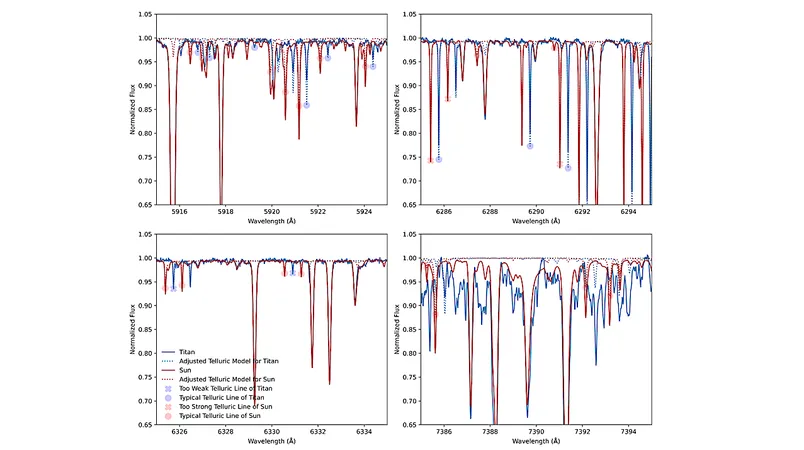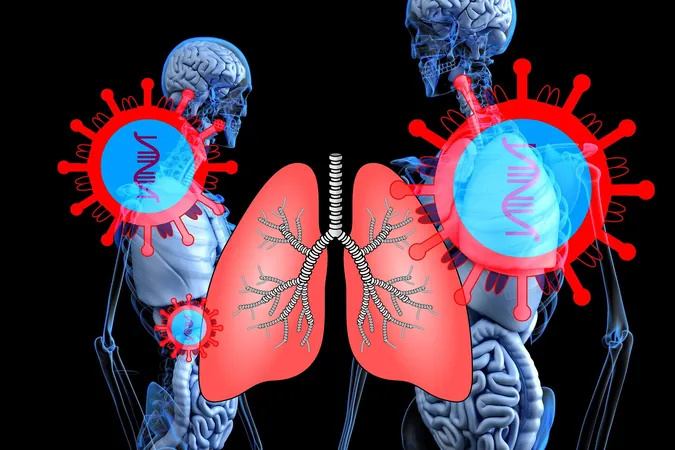
Groundbreaking Discovery: Unveiling Titan's Methane Secrets
2025-09-09
Author: Wei Ling
Titan's Mysteries Revealed Through Optical Spectra
Scientists have unveiled a treasure trove of absorption features in the optical spectra of Titan, Saturn's enigmatic moon, predominantly linked to methane (CH4). But why is this significant?
Methane: A Key Player in Planetary Atmospheres
Methane is an essential molecule not only on Titan but across planetary and exoplanetary atmospheres. However, despite its importance, a detailed high-resolution linelist at optical wavelengths remains a work in progress.
A Cutting-Edge Analysis Using ESPRESSO
In a fascinating new study, researchers have meticulously identified and characterized potential methane absorption features in Titan's high-resolution optical spectra. By using data from the ESPRESSO spectrograph, boasting an impressive resolution of about 190,000, they were able to delve deeper into Titan's atmospheric mysteries.
Innovative Detection Techniques Enhance Findings
Employing a conservative detection strategy, scientists ensured a careful differentiation between solar, telluric influences and the moon's own atmospheric signals. They even compared their findings with data from UVES, another spectrograph with a lower resolution of approximately 110,000.
Unprecedented Number of Absorption Features Identified
In this groundbreaking research, an astounding 6,195 potential CH4 absorption features were identified in the ESPRESSO spectra. Out of these, a remarkable 5,436 were reported for the first time, showcasing the immense capabilities of high-resolution optical data.
Harnessing Higher Resolution for Better Insights
The dual advantage of ESPRESSO's higher resolution is evident as it detected twice as many features in overlapping regions compared to UVES. However, many lines remained unresolved, indicating that most reported features were blended absorption structures.
Setting New Detection Limits
According to the study, the detection threshold for identifying such features corresponded to a CH4 absorption coefficient of roughly 0.02 km-am⁻¹. Moreover, comparisons with previous analyses and experimental data at similar temperatures revealed substantial agreement, despite some variations when correlated with different temperature conditions.
A Comprehensive Resource for Future Research
This study doesn’t just stop at discoveries. It provides a comprehensive list of Titan’s absorption features accompanied by crucial reliability metrics, serving as a foundational resource for future atmospheric research on Titan. Researchers Sirinrat Sithajan, Lalita Kaewbiang, Hugh R. A. Jones, Pakakaew Rittipruk, and Sukanya Meethong have paved the way for deeper exploration of this captivating moon.



 Brasil (PT)
Brasil (PT)
 Canada (EN)
Canada (EN)
 Chile (ES)
Chile (ES)
 Česko (CS)
Česko (CS)
 대한민국 (KO)
대한민국 (KO)
 España (ES)
España (ES)
 France (FR)
France (FR)
 Hong Kong (EN)
Hong Kong (EN)
 Italia (IT)
Italia (IT)
 日本 (JA)
日本 (JA)
 Magyarország (HU)
Magyarország (HU)
 Norge (NO)
Norge (NO)
 Polska (PL)
Polska (PL)
 Schweiz (DE)
Schweiz (DE)
 Singapore (EN)
Singapore (EN)
 Sverige (SV)
Sverige (SV)
 Suomi (FI)
Suomi (FI)
 Türkiye (TR)
Türkiye (TR)
 الإمارات العربية المتحدة (AR)
الإمارات العربية المتحدة (AR)